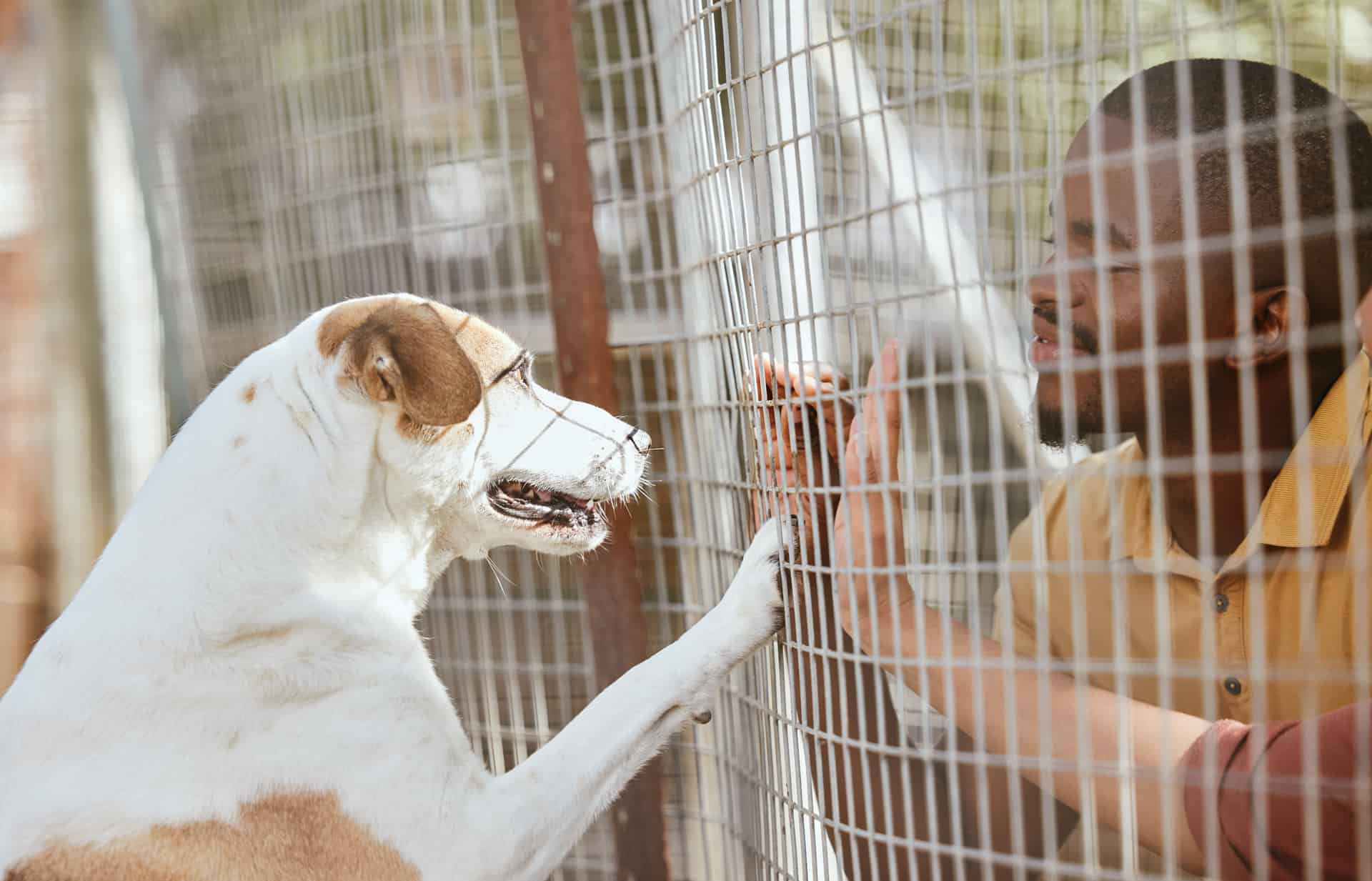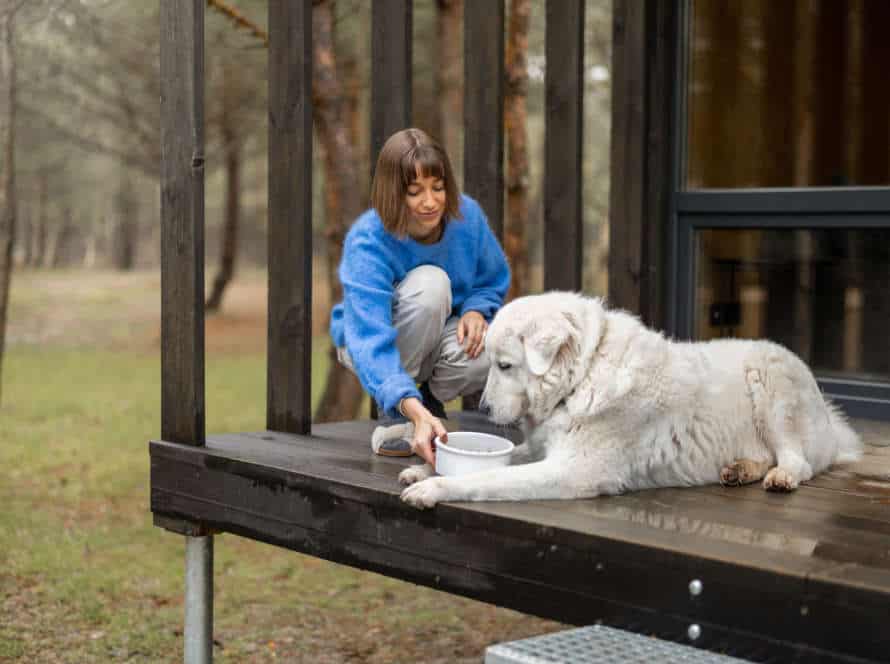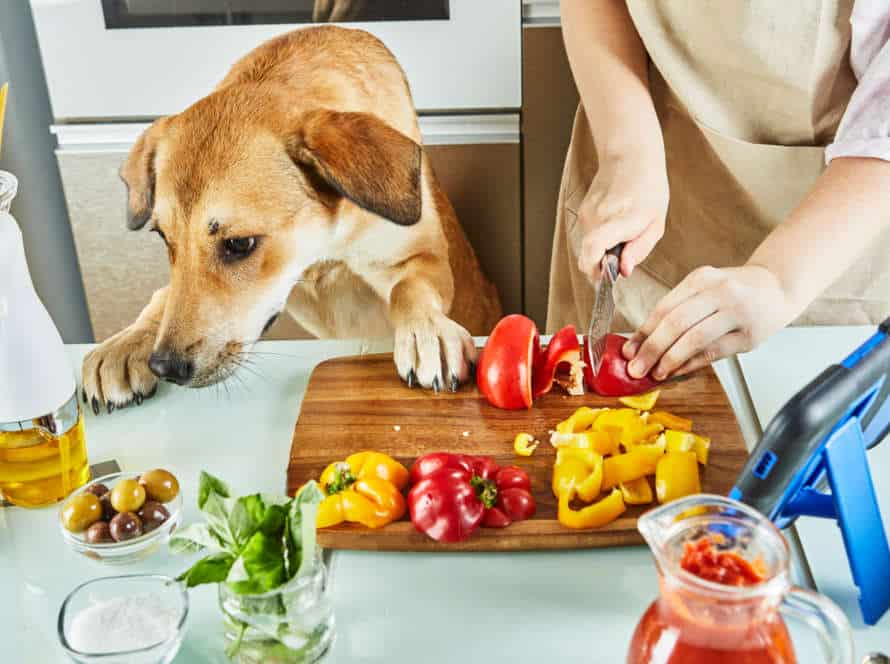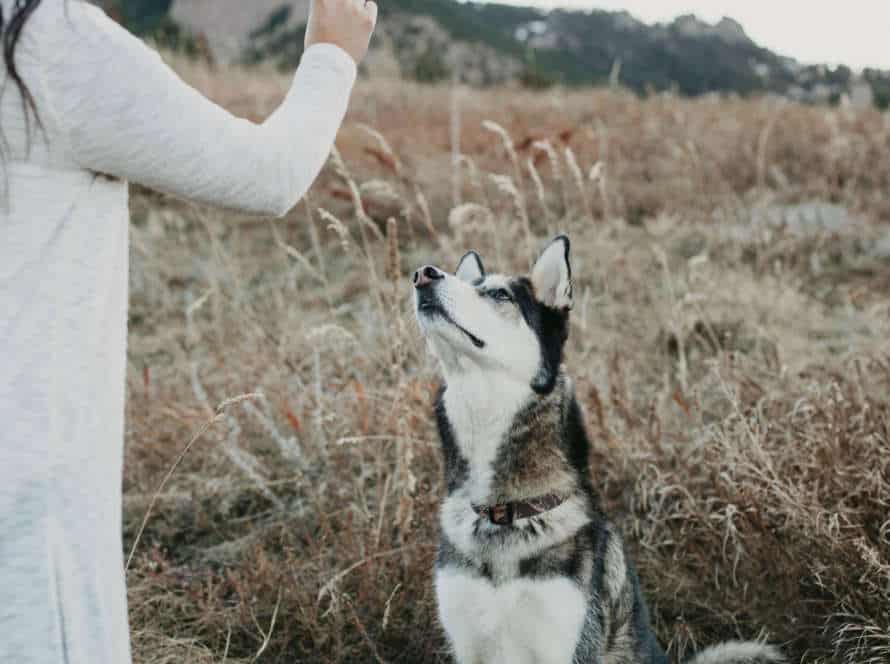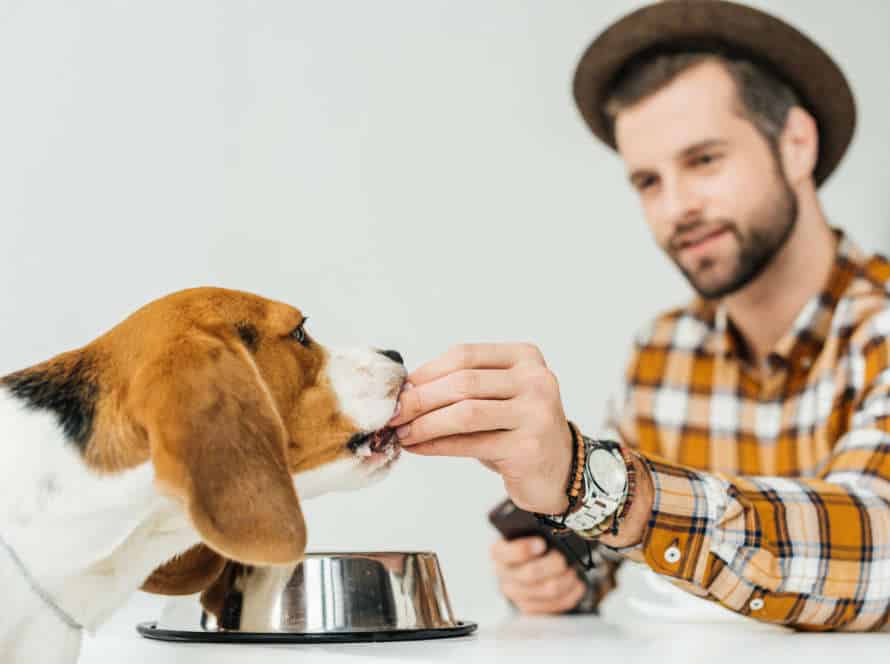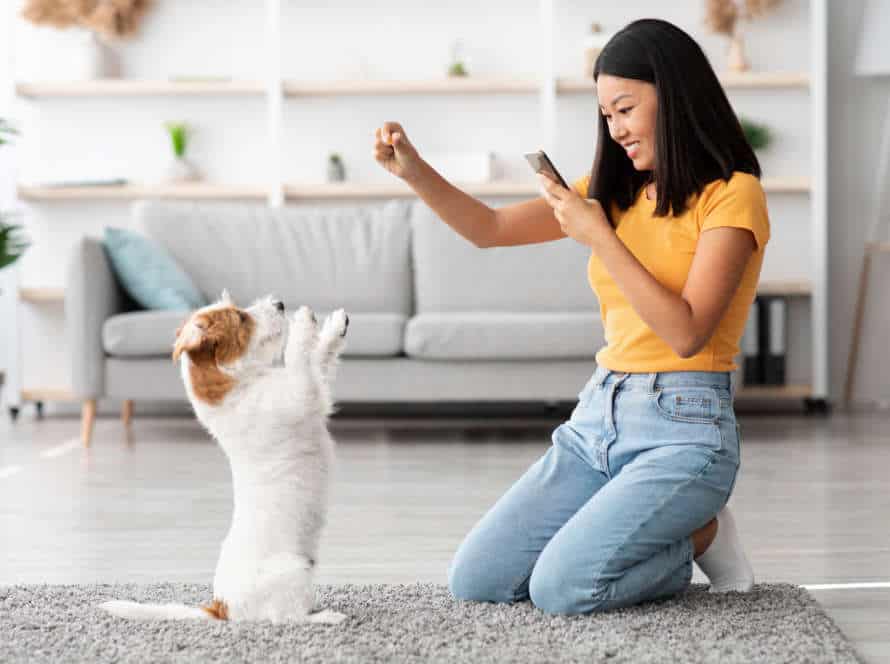Unlock Your Rescued Dog’s Trust: Essential Tips and Strategies
Unlocking the trust of a rescued pup is a must, but tricky. Patience, dedication, and the right strategies are key.
Here are some tips for earning your pup’s trust and having a strong bond:
- Give ’em space: Rescued dogs need time to adjust to their new home, so don’t overwhelm them with too much attention or physical contact.
- Set up a routine: Dogs love routine and it’ll make them feel safe and comfy. Have a schedule for feeding and exercise.
- Positive reinforcement: Reward your dog with treats, praise, and playtime for good behavior. Don’t punish or scold them for mistakes.
- Be patient: It may take weeks or months for them to feel comfy around you, so don’t rush it.
Building trust with a rescued pup takes effort and time, but it’s worth it!
Understanding Your Dog’s Background
Gaining trust with a rescued dog? First, take the time to understand their background. Knowing what they went through before can help you understand their behaviors. This gives you an idea of how much effort you’ll need to put in. Here are some strategies to gain insight into your pup’s experiences before joining your home:
Assessing your dog’s level of fear and anxiety
Assessing your pup’s fear and anxiety is a must to understand and solve their behavior issues. Check their body language and conduct. Fear and anxiety signs in dogs are trembling, panting, drooling, being restless, destructive behavior and hiding. To assess their stress level, watch them in diverse situations. Notice their responses to new people, places and experiences. Knowing their background, history of mistreatment or neglect, and early encounters will assist in recognizing triggering circumstances and offer a safer and more comforting environment for your pet. Unlocking your rescued pup’s trust needs patience, consistency and love. Over time, provide positive reinforcement, socialization and secure spots to cooperate with others. This will help reduce their fear and anxiety, and construct a stronger connection between you and your pup.
Identifying any past neglect or abuse
When rescuing a pup, watch for signs of past neglect or mistreatment. Such as:
- Fear of certain objects or situations.
- Negative reactions to raised voices, sudden movements, or strangers.
- Trouble socializing with other dogs or people.
- Destructive or aggressive behavior when left alone.
Patience, love, and support are key. Help them overcome fear and build a bond of trust. It can take time for a rescued dog to feel at home, but with patience and love they can learn to trust and thrive.
Recognizing key triggers for fear-based behavior
Recognize triggers for fear-based behavior. It’s essential to understand your rescued dog’s past. Fear-based behavior occurs often in rescue dogs. It can show in many ways such as hiding, shaking, barking too much, aggressive towards people or animals.
Observe your dog’s body language and behavior. See what situations or things make your dog act scared. It could be noise, objects, people, animals.
Once you identify triggers, desensitize your pup with positive reinforcement and gradual exposure to the stimulus.
Understand and address your rescued dog’s fear-based behavior. It’s a big step towards trust and harmony. You and your furry friend will both benefit.
Building Trust
Having a rescued pup can bring much joy. However, it can be tough to build the relationship if trust is lacking. To guarantee long-term success and both the pet and owner’s wellbeing, creating a rapport and trust is key. This article will tell you how to build trust with a rescued dog.
Approaching your dog in a non-threatening way
To build trust with your new furry friend, it is essential to approach them in a non-threatening way. Dogs that have been traumatized can be very scared and anxious. Here are some tips to help unlock their trust:
- Move slowly and gently, without sudden movements or loud noises.
- Speak softly and in a low voice.
- Don’t make direct eye contact, as this can be seen as a threat.
- Let them approach you on their own. Don’t overwhelm them with physical attention.
- Offer treats or toys to win their affection. But give them space if they seem stressed or scared.
With patience, your rescued pup will start to trust you and feel safe in their new home.
Using positive reinforcement
Positive reinforcement is a great way to build trust with rescued dogs. Focus on rewarding the behaviours you like. Here are some tips for success:
- Always have treats or toys when you’re around.
- Reward with treats, praise, or playtime when they do something you want – like following commands, showing affection, or being relaxed.
- Don’t punish bad behaviour – instead, redirect their focus to the good stuff.
- Be consistent and patient with your training – don’t give them too much to handle at once.
- Every dog is different – tailor your strategy to suit them.
By using positive reinforcement, you can build a great relationship with your rescued dog, and unlock their trust.
Setting a consistent routine
Making a habit out of things is a must when it comes to gaining your adopted pet’s trust. This helps them feel secure and safe in their new home! Here are some tips to make a consistent routine for your rescue pup:
- Stick to a meal and walk schedule: Feed them at the same time each day and take them out for walks at set intervals.
- Set a bedtime that stays true: Dogs love routine and it’ll help them calm down and feel at ease.
- Set up playtime: Have fun activities like fetch or tug-of-war at the same time every day. This’ll bond you with your pup, too!
- Provide boundaries and training: Consistency makes them understand what’s expected of them and shows you’re trustworthy.
Remember, consistency is key for setting up trust with your pup. Being patient and kind is a must. With that, your rescue pup will learn to trust you over time.
Training and Obedience
Training your rescued dog is essential for creating a long-term bond of trust. Some dogs might need only basic training, but many neglected rescues require extra patience and guidance. This will help your pup understand your commands and expectations of behaviour. Plus, it will allow them to trust and form a closer relationship with you. Here are some tips to get you started on training your rescued pup!
Teaching basic obedience commands
Teaching basic obedience commands is a must to build trust with your new pup. Here are some tips:
- Start with easy commands like “sit” and “stay.”
- Reward good behavior with treats and praise.
- Keep training sessions short and consistent, 10-15 minutes a day.
- Use the same words and gestures each time.
- Use a leash and collar during training.
- Practice in a quiet, familiar environment. Gradually introduce distractions as your pup gets more obedient.
- Consistency and positive reinforcement are key.
Pro tip: Incorporate play and exercise into training to keep your dog motivated.
Using commands to establish structure and boundaries
Commands for Training Your Rescued Puppy
To form structure and boundaries with your rescued pup, follow these tips:
- Start with basic commands such as “sit,” “stay,” and “come.”
- Use these commands regularly and reward good behavior to encourage good habits.
- Use a firm but kind voice when giving commands to avoid frightening your pup.
- Incentivize great behavior with treats or rewards.
- Be patient and consistent, as rescued dogs may take longer to learn and adjust to new surroundings.
- Finally, give your pup lots of love and affection to help build trust between you.
Introducing new experiences and environments
Introducing new experiences and environments is key for training and obedience for rescued dogs. It boosts their confidence, helps them overcome their fears, and teaches them how to react in different situations. Here are some tips and strategies to recall when introducing your rescued pup to new things:
- Start small: Take it slow and begin with low-stress environments. Work your way up to more challenging scenarios.
- Be patient: Rescued dogs need time to get used to their new surroundings. Introduce new experiences slowly and let them explore at their own pace.
- Use positive reinforcement: Reward and praise your pup for good behavior. Never scold or punish them if they are scared or anxious.
- Consult a professional: If your unsure or having trouble, get help from a professional dog trainer or behaviorist.
Socialization
Socializing your rescue dog is a key step to bonding with your pet. It teaches them you are the source of stability and helps them form positive relationships with other people and animals. Here are some great tips for socializing your rescue pup.
Exposing your dog to new people and animals
Socialization is key for a rescued pup. It helps them trust and be confident with new people and other animals. Here’s some tips to help:
- Start small – one or two new people/animals. Increase as pup becomes more comfortable.
- Stay positive – use treats, praise, and toys to create good feelings with new people and animals.
- Use caution – If pup looks scared or angry, slow down or stop. Get help from a pro if needed.
- Be consistent – Regular exposure keeps pup well-socialized and calm in any situation.
Supervising interactions
Supervising interactions is key for socializing a rescued pup. Be aware of triggers, and take it slow. Here are some tips for supervising:
- Start small – short walks or play with one dog.
- Observe body language – look for signs of stress like panting, pacing, growling.
- Intervene if needed – redirect attention with a toy or treat.
- Provide positive reinforcement – reward calm & friendly behaviors.
Socializing a rescued dog takes lots of time and patience. Have a positive attitude and lots of love.
Providing positive reinforcement during socialization
Providing positive reinforcement during socialization is key for gaining your rescued pup’s trust. Here’s how to use positive reinforcement:
- Treats! Give a treat when your pup meets new people or is around other dogs. This will make socialization a positive experience.
- Praise! Show your pup verbal praise and love while they’re socializing. This will build trust and strengthen the bond.
- Gradual introduction! Don’t overwhelm your dog with too much. Introduce new environments, people, and animals slowly to avoid stress.
In conclusion, positive reinforcement is an amazing way to build trust and a strong relationship with your furry pal!
Addressing Behavioral Issues
Behavior issues can be tricky to manage with a rescued dog. They might have experienced trauma or missed out on the socialization that all dogs need. It’s important to spot and tackle these issues so that you and your pup can have a good start. Let’s learn about the different methods to help your pup adjust to their new home.
Identifying and addressing problem behaviors
Unlocking your rescued pup’s trust is a must. To do this, problem behaviors need to be identified and addressed. Common issues may be had. Patience and training are key to improve these behaviors. Here are some examples:
- Separation Anxiety: When alone, the dog gets anxious. Increase time spent alone gradually and offer toys and treats.
- Aggression: The pup is aggressive to humans or other animals. Get help from a professional dog trainer and provide socialization opportunities in a controlled setting.
- Fearfulness: Scared of common things like loud noises or strangers. Provide positive reinforcement and introduce new experiences gradually in a safe and controlled way.
By dealing with these problem behaviors, trust can be built leading to a happier and healthier bond.
Working with a professional trainer or behaviorist
Behavioral issues in rescued dogs can be tough to tackle. It’s wise to get help from a pro dog trainer or behaviorist. They can assist you in several ways:
- Assess your pup’s behavior and offer tailored training to meet their needs.
- Design a positive reinforcement training plan to promote good behavior and prevent bad habits.
- Provide guidance and support so you can build a strong bond with your dog.
- Pass on essential tips to help you manage your pup’s behavior after training.
Investing in a professional is the key to long-term success and a happier life with your rescued pup.
Using positive reinforcement to correct behavior
Behavioral issues can be a challenge with rescued dogs. To address these issues, try positive reinforcement – a technique that rewards good behavior and encourages change.
Here are tips and strategies for using positive reinforcement:
- Use treats, toys or praise to reinforce good behavior. Whenever the dog behaves well, reward it.
- Be consistent with rewards. This is essential for reinforcing behavior.
- No punishment for bad behavior. Punishment can lead to anxiety and hinder trust-building. Instead, try redirection or ignore it.
- Celebrate small successes. If your dog responds to their name or walks on a leash without pulling, recognize and celebrate! This builds confidence and motivation.
- Pro tip: Patience, consistency and persistence are key to positive reinforcement. Training may take time, but this approach can unlock trust and create a happy and obedient companion.
Maintaining Trust
Bringing home a rescued pup? Establishing trust is essential! It’s key to building a strong bond and a safe, secure home. Here are tips and tricks to unlocking and keeping the trust of your rescued dog.
Continuing training and socialization
If you want to keep your trust with your adopted pup, training and socializing them is a must. Consistency and positive reinforcement are key. Here are some tips to make sure your pup is confident and happy:
- Use positive reinforcement to show them good behaviour and build their trust.
- Follow the same commands and cues each time.
- Take it slow when introducing your pup to new people and places, respecting their comfort level.
- Mental and physical activities every day can help relieve stress and give them confidence.
It takes time and patience to build a trusting bond with your pup. A consistent and positive environment will help your pup feel secure and loved.
Pro tip: Consult a certified trainer or behaviourist for help if your pup has gone through trauma or abuse.
Nurturing the bond between you and your dog
Trust is key to building a bond with your rescued pup. Here are some tips and strategies to unlocking that trust:
- Be patient. Building trust takes time, especially for a pup who may have had bad experiences in the past. Give your dog space and time to get used to their new home and form a connection with you.
- Utilize positive reinforcement. Reward good behavior with treats, compliments, and love. Avoid punishing them, as this could damage any trust they have in you.
- Create a routine. Dogs love structure and predictability. Give them a steady schedule of meals, exercise, and playtime.
- Respect your pup’s limits. Keep an eye on their body language and vocalizations. If they seem anxious or scared, give them some space.
- Look for help if needed. If your pup has gone through a lot of trauma or has behavioral issues, talk to a professional dog trainer or behaviorist.
By following these tips and strategies, you can create a strong relationship with your rescued pup, one full of love and companionship!
Celebrating progress and accomplishments
Progress & achievements should be celebrated with your rescued pup. It’s essential for creating & sustaining trust. Doing this boosts their confidence & helps them feel more secure. Here are easy ways to do it:
- Give them treats & toys.
- Snuggle & rub their tummy.
- Take them for a special walk or explore somewhere new.
- Schedule fun activities they enjoy.
Celebrating successes shows your pup that you care & helps them trust & adjust.
Frequently Asked Questions
Q: How can I gain the trust of my rescued dog?
A: Patience, consistency, and positive reinforcement are key. Take the time to develop a routine with your dog and reward good behavior. Allow your dog to approach you and, over time, establish a bond of trust.
Q: My rescued dog is shy and withdrawn. What can I do to help them feel more comfortable?
A: Give your dog space and don’t force interactions. Create a safe and calming environment with comfortable bedding, toys, and treats. Speak in a soothing voice and use gentle touches to show your dog that they can trust you.
Q: My rescued dog is showing signs of aggression. How can I safely address this behavior?
A: Consult with a professional dog trainer or behaviorist. It’s important to address aggressive behavior early on so it doesn’t escalate. Avoid situations that may trigger aggressive tendencies and always prioritize your safety and the safety of others.
Q: Can I use punishment to correct unwanted behavior in my rescued dog?
A: Punishment can often escalate anxiety or fear in a rescued dog and damage the bond of trust that is being built. Instead, focus on positive reinforcement and redirecting the behavior with rewards and encouraging actions to steer your dog towards good behavior.
Q: Will my rescued dog ever fully trust me?
A: Every rescued dog is different, but with patience, consistency, and positive reinforcement, many rescued dogs will learn to trust again. Keep in mind that it may take time, but the bond that you establish with your dog will be worth it in the end.

